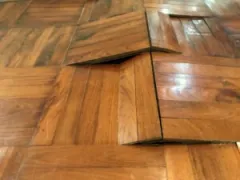
Ground vibration is a seldom recognized yet potent force that can cause significant damage to residential and commercial properties. It is the oscillation of the ground caused by various sources, such as construction activities, heavy traffic, or natural seismic events. These vibrations travel through the soil and can affect the stability and integrity of buildings and structures.
Understanding the potential causes and principles behind this type of property damage is crucial for property owners who have experienced it, especially when considering legal action our Boca Raton property damage lawyers are here help you seek compensation.
Defining Ground Vibration is the First Step to Understanding its Impact on Property Damage
Before we can explore how ground vibration can damage your property, let’s define what it is. Ground vibration is the movement of the Earth’s surface caused by various factors, which can transmit disruptive energy to structures, potentially causing damage. Here’s a deeper look into its causes and propagation:
- Causes: Construction work such as pile driving, blasting, and heavy machinery operation; traffic, especially heavy vehicles; and natural events like earthquakes.
- Propagation: Vibration waves move differently through diverse soil types, with denser soils typically reducing the amplitude and velocity of these vibrations.

The Impact of Ground Vibration on Structures
When the integrity of a structure is compromised by vibrations, the effects can range from minor to catastrophic. The impact depends on the vibration magnitude, frequency, and duration, as well as the building’s design and materials. Here are some ways in which properties can be affected:
- Foundation Settlement: Continuous vibration can cause soil to compact, leading to foundation settlement and structural cracking.
- Resonance: If the frequency of ground vibration matches the natural frequency of a structure, resonance may occur, amplifying the vibrations’ effects and potentially leading to severe damage.
Measuring and Monitoring Ground Vibration
Ground vibrations can be insidious; while humans may not feel them, they can cause cumulative damage to structures over time. To prevent such damage, rigorous standards and sophisticated monitoring techniques are employed.
Standards and Limits
The American National Standards Institute (ANSI) provides guidelines for evaluating the impact of ground vibration on built environments.
Local ordinances may also set specific limits for ground vibration based on the type of structure and its usage. For instance, residential areas have stricter limits to ensure the comfort and safety of inhabitants. These standards are often developed in line with federal and state regulations.
Monitoring Techniques
To adhere to these standards, techniques that measure vibration levels are employed. Among the most common are:
- Geophones: These devices convert ground movement into voltage, which can then be measured and analyzed. They are particularly useful for monitoring vibrations over time to assess whether a construction project is staying within regulatory limits.
- Seismographs: Similar to geophones, seismographs are used to measure the movement of the ground. They can provide a detailed record of the vibration amplitude, frequency, and duration, which are critical parameters in assessing potential damage to structures.
Accurate vibration measurements and diligent monitoring of ground vibrations are critical in preventing property damage and ensuring compliance with various safety standards.

Legal Framework Surrounding Groun d Vibration and Property Damage
The interplay between ground vibration and property damage is as much a legal issue as it is a technical one. Property owners faced with such damage must navigate a complex web of environmental protection laws and building codes that serve as a framework for establishing liability and responsibility.
- Environmental Protection Laws: The National Environmental Policy Act (NEPA) requires federal agencies to assess the environmental effects of their proposed actions prior to making decisions. While NEPA itself does not set vibration standards, it can mandate an environmental assessment that might include vibration impact studies for large-scale construction or infrastructure projects.
- Building Codes and Standards: At the state and local levels, building codes often incorporate standards that specify the maximum allowable levels of ground vibration to safeguard structures. For example, the Uniform Building Code (UBC) and International Building Code (IBC) provide guidelines that can be used to evaluate and design buildings to withstand expected vibration forces.
Property owners who find their property damaged due to vibrations must often show that the party causing the vibration failed to adhere to these regulations or standards. This proof can form the basis for a claim of negligence or nuisance, potentially leading to compensation for the property owner.

Who Can Be Held Liable for Property Damage Caused by Ground Vibration?
Determining liability in cases of property damage caused by vibration requires careful consideration of several factors, including:
- Negligence: In legal terms, addressing property damage from ground vibration hinges on two key concepts: negligence and strict liability. Negligence involves a failure to take proper care in doing something, which for a construction company could mean not implementing necessary measures to mitigate vibration, despite being aware of the potential harm. For example, if a construction firm disregards industry-standard practices for vibration control during demolition or excavation, and this leads to damage in adjacent buildings and properties, they could be held legally responsible for the consequences of their inaction.
- Strict Liability: Strict liability, on the other hand, may apply irrespective of negligence or intent. It is often relevant in inherently hazardous activities, such as blasting or pile driving. Under strict liability, companies undertaking such work may be held accountable for any resulting damage, regardless of the precautions they took. The rationale is that certain activities carry an inherent risk, and those who engage in them should be responsible for any damage that ensues, even if all safety measures were observed.
Seeking Legal Recourse for Vibration-Induced Property Damage
If you suspect that ground vibration has damaged your property, the pathway to legal recourse is methodical and evidence-based:
- Initial Steps: Immediate action is essential. Begin by thoroughly documenting the damage with photographs and detailed notes. Time-stamped video recordings can also be invaluable. Gather any records of nearby activities that could have caused the vibration, such as construction logs or traffic alterations. Engaging an expert in structural engineering or vibration analysis early on is crucial. They can provide a professional assessment that not only establishes the extent and cause of the damage but also serves as evidence if the case goes to court. Their assessment goes beyond cosmetic damages and documents structural damage not visible to the naked eye.
- Legal Process: Filing a legal claim typically starts with an attorney who specializes in property damage or construction law. They can guide you through the process, which may start with a demand letter and proceed to filing a lawsuit if necessary.
Call Ged Lawyers Today for Your Free Consultation
The legal team at Ged Lawyers is proficient in addressing property damage due to ground vibration and can provide comprehensive legal assistance. Our attorneys will guide you through the steps needed to determine who is at fault for your property damage and seek the compensation you deserve for the losses you suffered.
Contact us today for your free consultation.
